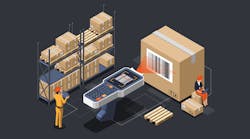5 Shop Floor Problems That Drive Customers Away
If you ask 10 different manufacturers to identify their toughest problem, odds are at least half will say, “We can’t get parts through the shop floor fast enough.”
When you think about it, their answer shouldn’t come as a surprise. Today’s manufacturing customers demand increasingly shorter turnaround times. They consider changes to jobs in progress to be your problem, not theirs. And by the way, they expect you to deliver on time, every time. In such an environment, if you don’t run a lean, mean shop floor, you’re going to struggle to meet those demands.
If you’re not getting parts through the shop in time to satisfy your customers, these five problems could be part of what’s getting in the way.
PROBLEM #1: Lack of Data Visibility
WITHOUT REAL-TIME DATA, YOU’RE CONSTANTLY STUCK IN REACTIVE RATHER THAN PROACTIVE MODE.
Few things are more frustrating (and costly) than watching machinists stand around because they don’t know what to work on next. Yet, that’s just one of the many issues that occur when real-time information doesn’t flow through the shop floor in a timely manner. Others include poor communication between work centers and departments, difficulty tracking the status of work in progress, and not being able to see how scheduling changes will affect other jobs in progress. Without real-time data, you’re constantly stuck in reactive rather than proactive mode.
SOLUTION:
The solution starts with implementing a fully-integrated ERP system where everyone has access to the data they need to make in-the-moment decisions with the click of a mouse or swipe of a finger. Meeting customer demands as they happen rather than when you can get around to them requires an ERP system that provides:
- Instant access to live data as projects move through the shop floor
- Detailed information on the status of every step of a project
- Dashboards that can display live data throughout the shop floor
- Real-time information on bottlenecks as they occur
- Automatic alerts to “hot” jobs that are behind schedule
When people have the data they need, everyone works from the same page rather than their own agendas.
“We used to guess about the status of most jobs,” says John Davis, ERP director for Leiden Cabinet. “Now we simply log into our ERP system and all the data we need is right there. Improved shop floor control has by far been the biggest benefit of our ERP system.”
PROBLEM #2: Scheduling is a Mess
Scheduling is second on the list for two reasons. One, it initiates and drives the flow of work through the shop. Two, if you can’t adjust your scheduling to accommodate customer changes, you will lose business to competitors who can.
IF YOU CAN’T ADJUST YOUR SCHEDULING TO ACCOMMODATE CUSTOMER CHANGES, YOU WILL LOSE BUSINESS TO COMPETITORS WHO CAN.
Not knowing the true capacity of your labor, machines, and work centers make it difficult to establish realistic schedules, especially with short due dates. The inability to engage in “what if” scheduling scenarios makes it equally hard to adjust your schedule on the fly. When you can’t see how inserting a hot job into the schedule will affect everything else, all you can do is guess.
SOLUTION:
Meeting current market demands requires an ERP system with robust scheduling capabilities, starting with advanced finite/infinite scheduling to provide the real-time data necessary to conduct accurate “what if” scenarios.
The ability to move jobs up or back days, weeks or even months allows you to meet customer changes (or negotiate realistic due dates) based on real data rather than guesswork.
Other features to look for include:
- A Master Schedule Dashboard that lets you see schedules by department, work center, project, work order, and bill of material (BOM).
- Ability to schedule similar jobs by work center
- Real-time reporting on job status
- Employee, tool, and material scheduling
“Our scheduling module lets us easily see where we have available time on our machines in case we need to move up a job or push others out,” says Dave Dahl, Plant Manager for the custom fabricator Alexandria Pro-Fab.
“Whenever we make a change to the schedule, the system immediately shows how it will affect every other job. As a result, our on-time delivery rate averages 98%."
PROBLEM #3: Incorrect Routers, Work Orders, and BOMs.
STOP DOING THESE DOCUMENTS BY HAND AND START DOING THEM ELECTRONICALLY.
Moving parts through the shop in a timely manner depends to a large degree on the accuracy of your routers, work orders, and BOMs. Get them right and jobs flow smoothly and efficiently from one step to the next. Get them wrong and everything can grind to a halt. Incorrect routers and work orders are a major source of quality problems, which, in turn, are a major source of missed due dates due to rework or the need to produce more parts due to unacceptable quality. Meanwhile, large, manually-driven BOMs practically invite data error problems and can take weeks or even months to build.
SOLUTION:
This is one problem with a straightforward fix: stop doing these documents by hand and start doing them electronically. Most ERP systems offer basic features that make it possible to electronically send error-free routers and work orders to the shop floor. However, the really big time savings come from advanced features that eliminate the need for manual data entry and the human error that goes along with it.
- EDI: Electronically import customer orders, change orders, rev updates, and more.
- CAD INTERFACE: Automatically import the dynamic BOM into your ERP software.
- BOM COMPARE: Compare your ERP BOM with the CAD/CAM BOM to quickly identify any discrepancies.
- PRODUCT CONFIGURATOR: Build huge, accurate multi-level BOMs in minutes.
When you build and deliver routers, work orders, and BOMs electronically, you’ll be amazed at how your rework shrinks.
PROBLEM #4: Inventory Sucks
It’s bad enough when machinists stand around because they don’t know what to work on next. It’s doubly infuriating when they know what to do but don’t have the parts on hand to do it. In addition to causing jobs to be late, inventory problems have a way of spreading into other areas of the business.
GET YOUR INVENTORY RIGHT AND YOU’LL KNOW YOUR INVENTORY COSTS DOWN TO THE PENNY.
For example, over-purchasing so you don’t run out of parts. Expedited shipping costs to get materials in and jobs out at the last minute. Inventory counts that take days to complete. These, and other issues, all conspire to drive up costs while lowering efficiency and customer satisfaction.
SOLUTION:
Maintaining accurate inventory is like raising kids—it takes a village. Meaning it’s everyone’s responsibility. It starts with barcoding all incoming materials and electronically receiving them into the system as soon as they arrive. Instead of climbing over shelves to see what’s in stock, a few clicks of the mouse will identify everything you have in inventory, what’s on order, and when it’s scheduled to arrive.
Your inventory module should offer advanced features such as automatic reorder capabilities (with the ability to set min/max set points), lot-bin tracking to provide complete traceability, material drop tracking, and more. You’ll also need label printing capabilities, a quality module that automatically adjusts inventory due to rework, and a planning and scheduling module that integrates with inventory to provide updates on job changes that impact inventory delivery dates.
Get your inventory right and you’ll know your inventory costs down to the penny. You’ll know when you bought every material and why. And you won’t have to worry about a $10 part holding up a $50,000 project.
“In the past, locating the right mold for a job could take hours,” says Jay Jolly, Co-Owner of Advanced Plastiform. “Now that everything from tooling to materials has its own barcode label, we find it in seconds.”
PROBLEM #5: Inefficient Materials Movement
Just because you have sufficient parts and materials in inventory doesn’t mean they will get to the right place at the right time. In the past, you could get by with handwritten pick and move tickets. These days, not so much. Manually tracking material movement inevitably leads to problems, including:
WHEN A JOB IS RUNNING UNATTENDED YOU CAN STILL GATHER THE MACHINE COST AND OVERHEAD.
- Lost or misplaced inventory
- Employee downtime when parts don’t arrive on time
- Jobs shipped late
- Lack of traceability required to meet government and industry standards
- Inaccurate manual inventory counts
The list goes on and on. Fortunately for manufacturers willing to step up to the latest in mobile technologies, it doesn’t have to.
SOLUTION:
With mobile materials movement—which combines the latest in barcode, handheld printing, and mobile device technologies—you can perform this essential task with unprecedented speed, visibility, and control. You also get complete traceability of every piece of material that moves through the shop.
Mobile materials management starts with barcoding all types of inventory, not just incoming parts and raw materials. Simply scan the barcoded label of everything that comes into your shop, and the ERP mobile application records the transaction in real time, thereby eliminating data entry errors and producing real-time transactional labels to speed up the materials management process.
With mobile, you can automatically receive advance purchases into your inventory default bin or stocking bin. You can issue material for a work order at the point of picking, making bin-to-bin transfers a snap. You can even label materials picked to WIP by printing a transactional issue-to-work order label. And you can do it anywhere, at any time, using your tablet or other mobile devices.
Every manufacturer has struggled with these five problems at one time or another. So if you’re losing sleep over them, you aren’t alone. Global Shop Solutions helps manufacturers around the globe put these problems behind them, and we can help you too.




















